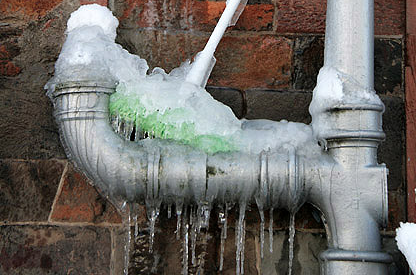The article directly below relating to How To Avoid Freezing Pipes is truly intriguing. Don't bypass it.

Winter can damage your plumbing, particularly by freezing pipelines. Below's just how to stop it from happening and what to do if it does.
Introduction
As temperatures decline, the risk of frozen pipes increases, potentially bring about costly repair work and water damages. Recognizing how to avoid icy pipes is essential for homeowners in chilly environments.
Comprehending Icy Pipelines
What creates pipes to ice up?
Pipelines freeze when exposed to temperatures listed below 32 ° F (0 ° C) for expanded durations. As water inside the pipes ices up, it increases, putting pressure on the pipeline wall surfaces and possibly creating them to break.
Dangers and problems
Icy pipes can bring about water system disturbances, home damage, and expensive fixings. Burst pipelines can flooding homes and trigger comprehensive structural damage.
Indications of Frozen Pipeline
Identifying frozen pipelines early can prevent them from breaking.
Just how to determine icy pipes
Search for reduced water circulation from taps, uncommon smells or sounds from pipes, and noticeable frost on revealed pipelines.
Avoidance Tips
Shielding susceptible pipes
Cover pipelines in insulation sleeves or utilize heat tape to secure them from freezing temperature levels. Focus on pipes in unheated or exterior locations of the home.
Heating methods
Keep indoor rooms adequately warmed, specifically areas with pipes. Open up closet doors to permit cozy air to circulate around pipes under sinks.
Securing Outdoor Pipes
Yard hoses and outdoor taps
Detach and drain pipes yard pipes before winter. Mount frost-proof faucets or cover exterior faucets with shielded caps.
What to Do If Your Pipes Freeze
Immediate actions to take
If you believe frozen pipes, keep taps open to ease stress as the ice melts. Utilize a hairdryer or towels taken in warm water to thaw pipelines gradually.
Long-Term Solutions
Architectural changes
Think about rerouting pipelines far from exterior walls or unheated areas. Add extra insulation to attics, basements, and crawl spaces.
Upgrading insulation
Buy high-grade insulation for pipelines, attics, and wall surfaces. Appropriate insulation aids maintain consistent temperature levels and minimizes the risk of frozen pipes.
Verdict
Avoiding icy pipelines calls for aggressive measures and quick actions. By comprehending the causes, indications, and preventive measures, property owners can protect their pipes throughout cold weather.
6 Proven Ways to Prevent Frozen Pipes and Protect Your Home
Disconnect and Drain Garden Hoses
Before winter arrives, start by disconnecting your garden hoses and draining any remaining water. Close the shut-off valves that supply outdoor hose bibs and leave the outdoor faucet open to allow any residual water to drain. For extra protection, consider using faucet covers throughout the colder months. It’s also important to drain water from any sprinkler supply lines following the manufacturer’s directions.
Insulate Exposed Pipes
Insulating your pipes is an effective way to prevent freezing. Pipe insulation is readily available at home improvement stores and is relatively inexpensive. Pay close attention to pipes in unheated areas such as the attic, basement, crawl spaces, or garage. Apply foam insulation generously to create a buffer against the cold. You can also wrap your pipes in heat tape or thermostat-controlled heat cables for added warmth.
Seal Air Leaks
Inspect your home for any cracks or openings that could let in cold air. Seal any holes around the piping in interior or exterior walls, as well as the sill plates where your home rests on its foundation. Additionally, make sure to keep your garage door closed unless you’re entering or exiting. Leaving it open creates a significant air leak that can lead to frozen pipes.
Allow Warm Air Circulation
During cold snaps, it’s essential to allow warm air to circulate evenly throughout your home. Leave interior doors ajar to promote better airflow. Open kitchen and bathroom cabinets to help distribute heat consistently around the rooms. If you have small children or pets, be sure to remove any household chemicals or potentially harmful cleaners from open cabinets for safety.
Let Faucets Drip
A small trickle of water can make a big difference in preventing ice formation inside your pipes. When temperatures drop significantly, start a drip of water from all faucets served by exposed pipes. This continuous flow helps prevent the water from freezing. Additionally, running a few faucets slightly can relieve pressure inside the pipes, reducing the chances of a rupture if the water inside does freeze.
https://choateshvac.com/6-proven-ways-to-prevent-frozen-pipes-and-protect-your-home/
:strip_icc()/snow-outdoor-faucet-pipes-4af65d1e5e904fb1aa7bf74071fe5d89.jpg)
I came across that post about How to prepare your home plumbing for winter weather while exploring the web. Liked our review? Please share it. Let another person locate it. Thank-you for going through it.
Book Now!